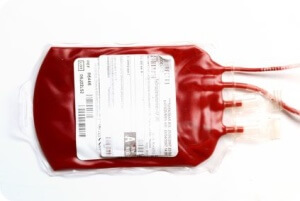This post is also available in:  Français
Français  Italiano
Italiano  Español
Español

Everyone has heard of EPO over the past few decades, whether in the medical community at the time of it’s discovery and popularization or more publicly through its usage in sporting events in the 1990s. Cycling is the most controlled sport in the world, and EPO was famously linked with the professional cycling team Festina.
But what is behind these three letters…? What does each one stand for, and what is EPO?
EPO definition
Erythropoietine (EPO) is a hormone naturally secreted by the kidneys (80-90%) and the liver (10-20%), as well as the uterus. It stimulates the creation of red blood cells, which transport oxygen through the blood to your organs and muscles.
In 1983 synthetic EPO was produced industrially, which was a real breakthrough for those suffering from red blood cell deficiency. It opened more opportunities for people with kidney failure undergoing hemodialysis, infants with severe anemia and people going through heavy chemotherapy cancer treatments. It appeared in France in 1990 under the name Eprex and in 1991 with the name Neorrecormon.

There are several types besides natural EPO. Each one has a distinct molecular structure and lifespan.
NESP requires one injection per week, CERA one injection per month, and other synthetic molecules are currently under development.
Apart from its medical use, athletes and their retinues will quickly see the benefits of this product, which significantly increases oxygen in the blood.
These types of doping methods have already been used in recent decades in other forms.
There are natural high-altitude preparation methods. They involved training at high altitudes so that the body has to make up for the lack of oxygen. Then a few weeks before the competition, the athlete descends to lower altitudes with an excess of red blood cells produced naturally by the body. This natural method is legal and still used today. For example, France’s national XV team currently trains its rugby world champions in the mountains.
Then things began to fall apart. In the 1950s and 60s, swimmers and gymnasts from eastern countries (East Germany, the USSR) voluntarily “became” or were “forced” to be pregnant. The body benefited from natural hormone production and the pregnancy was interrupted 3 to 6 months later.
 Then blood transfusions arrived. The procedure was simple: collect and store a quantity of blood, continue training while the body had to replenish the lost cells, and re-inject the blood a few days before the competition.This process was very difficult in terms of storage. An Italian runner caught in the 1980s was disqualified and suspended.
Then blood transfusions arrived. The procedure was simple: collect and store a quantity of blood, continue training while the body had to replenish the lost cells, and re-inject the blood a few days before the competition.This process was very difficult in terms of storage. An Italian runner caught in the 1980s was disqualified and suspended.
Then came “Pot Belge”. This is a completely illegal mixture used in cycling. It was not only made from doping products, but contained amphetamines, analgesics, heroin, cocaine, etc. Most of the time it was made as an artisanal product, carrying all of the usual health risks for an athlete.
This so-called “poor man’s” doping had physical as well as significant psychological risks. In fact, since it contains narcotics, some athletes are still dependent on this drug several years after it ended their career.

With EPO, doping became professional on a large scale!
In fact, an Italian doctor at the time named Dr. Conconi popularized the practice in Italy, and the cycling world was gradually invaded.
This is because EPO is a great product for those who want to cheat. It is harder to detect in urine tests than any other product on the market and researching it is expensive. It takes several blood tests in addition to urine tests to detect it reliably.
EPO has an important impact on athletes who play endurance sports because it increases stamina and reduces fatigue. Performance is improved by about 10%.
The erythropoietine molecule (its scientific name) increases red blood cell production from its normal level of 45% up to 65%. Red blood cells oxygenate the muscles to enable combustion, produce muscular energy and fuel the body’s other organs.
Numerous athletes tested positive for this molecule, which is also used for endurance.
 Of course there are high profile cyclist cases, such as the worldwide coverage of the revelation that seven-time Tour de France winner and world champion Lance Armstrong had taken EPO. There was a case concerning a French cyclist earlier this year, as well as cases concerning cyclists like Italian Davide Rebellin from the 2008 Olympic Games or German Stefan Schumacher from the 2008 Tour de France and 2008 Olympic Games.
Of course there are high profile cyclist cases, such as the worldwide coverage of the revelation that seven-time Tour de France winner and world champion Lance Armstrong had taken EPO. There was a case concerning a French cyclist earlier this year, as well as cases concerning cyclists like Italian Davide Rebellin from the 2008 Olympic Games or German Stefan Schumacher from the 2008 Tour de France and 2008 Olympic Games.
Lance Armstrong had begun to use this product at the start of his young career until he was interrupted by testicular cancer and had to undergo chemotherapy.
Cycling has always been heavily regulated, and naturally the more tests there are, the more cheaters are caught.
The UCI (International Cycling Union), the governing body of world cycling, has a real desire to fight against this. And in view of the difficulty of detecting EPO in cyclists, it has implemented a biological passport for each cyclists and required everyone to declare their place of residence or address while traveling in order to test them regularly, even in the off-season or with no warning. If a cyclist misses a test, they risk suspension.
This willingness to act is not the same across all athletic federations. Alex Schwartz, winner of the 50km in the Beijing Olympics, tested positive but was not prevented from competing by the IAAF (International Association of Athletics Federations).
The list is long, and we could also name an Ethiopian in the New York marathon, French midfielders and many others…

EPO’s side effects
But be careful, using EPO – especially synthetic EPO – is not without risk.
In fact, increasing red blood cells risks causing blood viscosity (thicker blood). In this case, blood circulation is not sufficient and you may encounter risks like blood clots, possibly phlebitis or strokes, hypertension and potentially cardiac arrest.
This may explain the increased number deaths of of young elite athletes due to cardiac arrest observed in recent years, especially in soccer and cycling.
Therefore this product should only be used in the case of deficiency or regular and prolonged intense physical activity, and only under serious and permanent medical supervision.
Conclusion
Synthetic EPO continues to be developed and constantly researched. Some new variants are even expected soon on the market. But people are already discussing other molecules and products that could quickly replace EPO.


